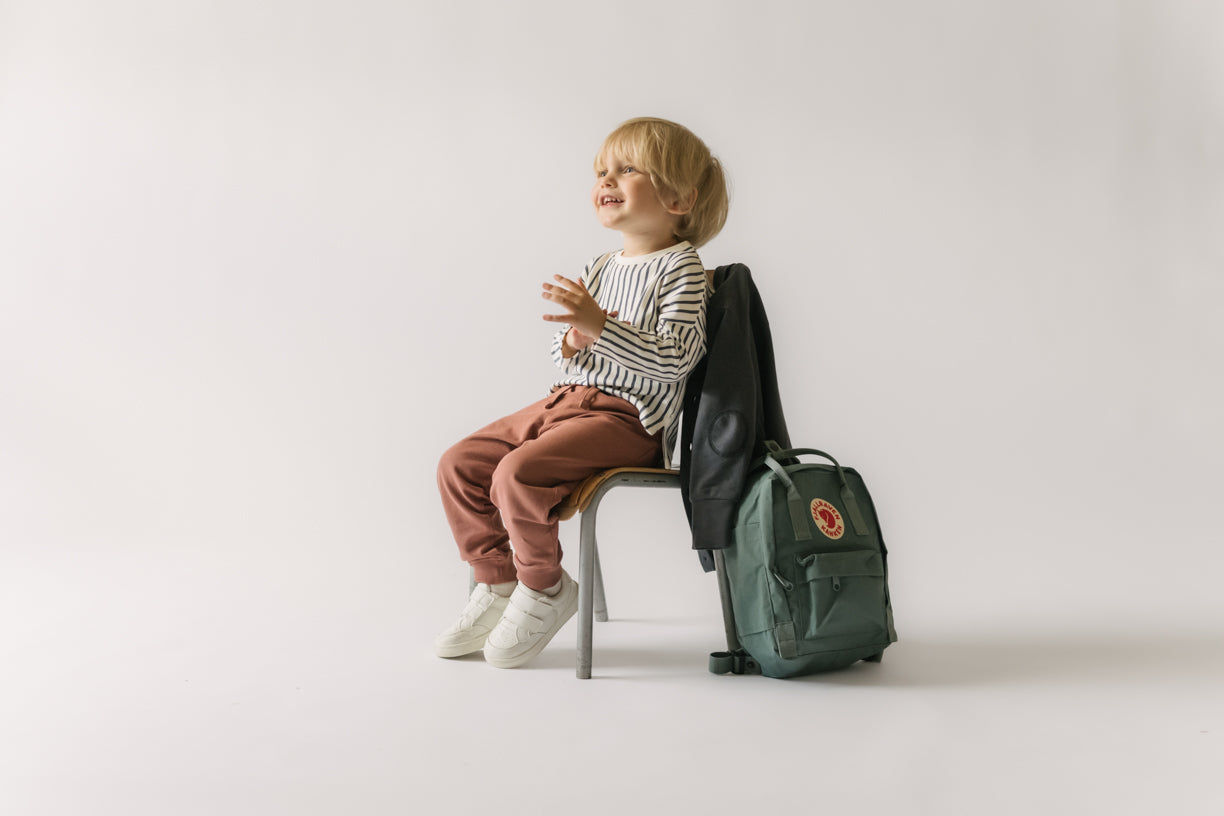Whether it’s their first time in daycare, a nursery program, or preschool, the transition from home to classroom is a big milestone and one that can come with lots of emotions (for you both!). With a little preparation, this new beginning can feel exciting, empowering, and even joyful.
French Terry Ruffle Sweatshirt & Jogger
Here are our top 10 starting preschool tips to help your little one ease into their new routine:
1. Introduce the idea early
Start talking about daycare or preschool in the weeks leading up to their first day. Share what their teacher might be like, what they’ll do each day, and how proud you are of this exciting next step.
2. Visit the classroom together
Attend an open house, schedule a tour, or even set up a playdate with a future classmate. Being able to picture the space (and a friendly face) helps reduce first-day nerves.
3. Ease into the new routine
If you know the daycare or preschool schedule, start practicing it at home. That could mean adjusting nap times, serving lunch at a similar hour, or moving bedtime a little earlier.
4. Ask all your questions
Talk to the school about diapering, potty training, separation plans, and how parents are encouraged to say goodbye. Knowing what to expect helps you feel confident, and your little one will pick up on that.
5. Focus on the fun
Rather than putting pressure on them to be a “big kid,” focus on what they’ll enjoy—art time, outdoor play, singing songs, and meeting new friends. Normalize nervous feelings and reassure them they’ll adjust with time.
6. Pack with comfort in mind
Let them pick out their own backpack and bring along a lovey or something of yours for reassurance. Don’t forget to include a pouch with extra essentials: a cozy sweatshirt, a change of clothes, socks, sun hat, rain jacket, and indoor/outdoor shoes. Pehr’s Back to School Stack & Save makes it easy to grab everything you need (and save while you do it).
7. Read preschool-themed books
Snuggle up with a cozy blanket and share stories that introduce the idea of preschool. Choose books that explore emotions and routines, and ask your little one how they’d feel in the characters’ shoes.
8. Try pretend play
Role-play activities like drop-off, circle time, and lunchtime. This kind of play helps toddlers process new experiences, develop language around feelings, and feel more in control.
9. Adjust your family routine
Consider your new commute, drop-off and pick-up schedules, and how that impacts meal planning or bedtime. A little planning now can make mornings smoother later.
10. Share your own stories
Dig out old photos and share how you felt about starting preschool. Kids love hearing that grown-ups had the same big feelings—and that everything turned out just fine.
A Note for Parents
Sending your little one off to daycare or preschool can tug at your heartstrings. But this new chapter is filled with growth, joy, and discovery. Keep the lines of communication open, take time to talk about their day, and celebrate the little moments—like a new friend made or a new song learned. Whether your child is eager or a little hesitant, we hope these tips help make the transition to school feel just right.

